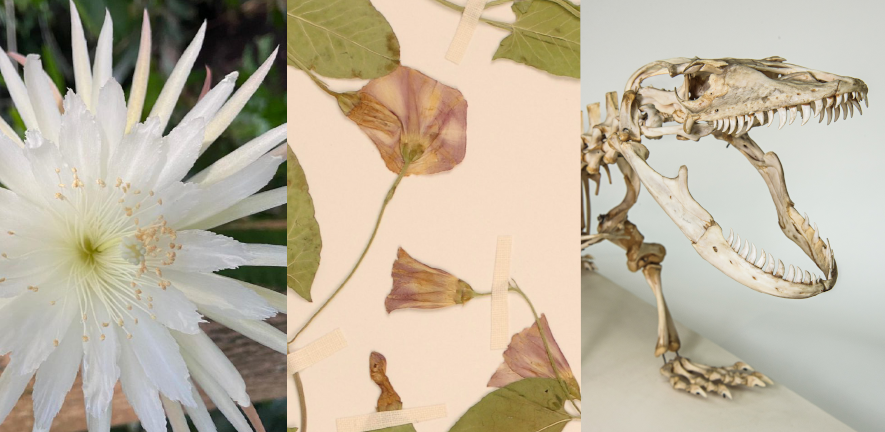
The School of Biological Sciences houses three world-renowned collections: the Botanic Garden, the Herbarium and the Museum of Zoology. This unique infrastructure provides an outstanding resource for research and teaching, as well as playing a key role in our outreach and public engagement activities.
School-based Collections include:
Botanic Garden
The Cambridge University Botanic Garden holds a collection of over 8,000 plant species from all over the world to facilitate teaching and research. The Garden provides resources including living collections, printed collections and archives, herbarium, growth facilities and horticultural expertise for any member of the University to apply in research and study. They also collaborate with botanic gardens worldwide and other partner organisations in conservation, as well as with researchers from other universities, horticultural colleges, further education colleges and other research institutions.
More information
Herbarium
The University of Cambridge Herbarium, part of the Department of Plant Sciences, is one of the largest single biodiversity archives in the UK, comprising an estimated 1.1M specimens representing over 300 years of natural history records. It is a rich resource for many scientific and historical fields of research, from evolutionary genetic studies to present day conservation science and investigations into colonial history and the development of scientific ideas about the natural world. In May 2022, the Herbarium was officially awarded Designated status by the Arts Council England.
Specimens from around the world have been added to the collection as a result of purchases, gifts, exchanges and benefactions. The British collection is one of the finest and specimens are still being added. The Herbarium is famous for its historic collections such as the plant specimens gathered by Charles Darwin on the voyage of the ‘Beagle’, and the John Lindley Herbarium with its many new species collected on nineteenth-century expeditions to unexplored places in North America and Australia. The Herbarium also has a unique collection of taxonomic books and floras.
More information
Museum of Zoology
The Museum of Zoology is one of the country’s largest and most important natural history museums, with over two million modern and fossil specimens from across the world. The specimens are made available for undergraduate teaching, research and public engagement. Thousands of multi-disciplinary researchers and enthusiasts from around the world have studied the collections over many years resulting in a greater understanding and appreciation of our natural world. The Museum is embedded in the Department of Zoology.
The Collections are open to scientists and students for the purpose of non-commercial, scientific research.

